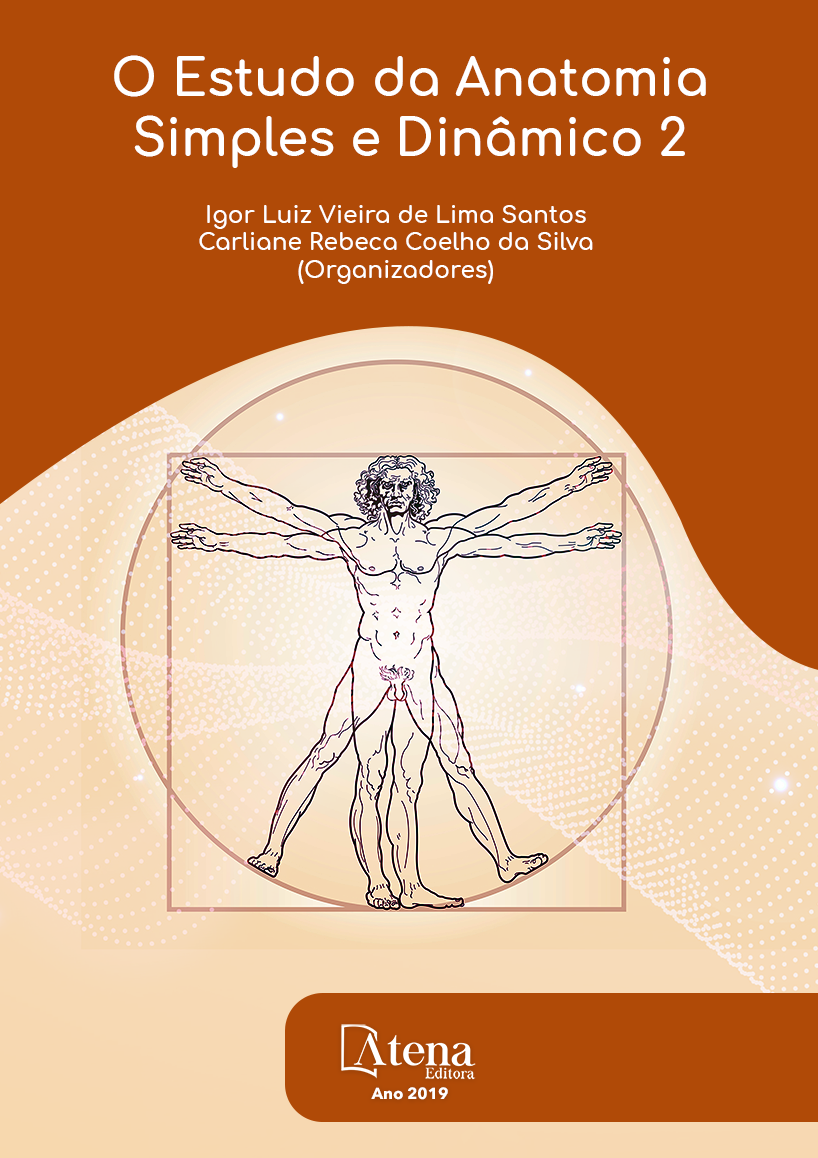
ESTUDO CRANIOMÉTRICO DO ÍNDICE FACIAL SUPERIOR E SUA CORRELAÇÃO COM O ÍNDICE CEFÁLICO EM CRÂNIOS SECOS
O índice cefálico é uma medição
craniométrica de grande importância dentro
da antropometria. É um parâmetro muito
utilizado na avaliação do crescimento e
desenvolvimento de um indivíduo, bem como
no diagnóstico de diversas anomalias de forma
e tamanho do crânio. Já os índices faciais
são determinantes na mensuração da face,
que possui características próprias ósseas e
musculares, as quais influenciam na respiração,
mastigação, deglutição e fonação. Sendo o
neurocrânio e o viscerocrânio componentes
do crânio, supõe-se existir relações entre os
índices cefálico e o facial superior. O presente
estudo teve por finalidade correlacionar o índice
cefálico com o índice facial superior em uma
amostra de 32 crânios secos pertencentes ao
Departamento de Morfologia da Universidade
Federal da Paraíba. Utilizando-se métodos
estatísticos como forma de correlacionar o
desenvolvimento cefálico e facial, encontrou-se
uma relação fraca e negativa entre os referidos
índices.
ESTUDO CRANIOMÉTRICO DO ÍNDICE FACIAL SUPERIOR E SUA CORRELAÇÃO COM O ÍNDICE CEFÁLICO EM CRÂNIOS SECOS
-
DOI: 10.22533/at.ed.33119250913
-
Palavras-chave: Crânio; Craniometria; Índice cefálico; Face; Índice Facial
-
Keywords: Skull; Craniometry; Cranial index; Face; Facial index
-
Abstract:
The cranial index is a craniometric
measurement of great importance within
anthropometry. It is a parameter widely used in evaluating the growth and development
of an individual, as well as in the diagnosis of various anomalies of cranial shape and
size. On the other hand, facial indexes are determinant in the measurement of the
face, which has its own bone structure and muscular characteristics, which influence
breathing, chewing, swallowing and phonation. Since the neurocranium and the
viscerocranium are components of the skull, it is assumed that there are relations
between the cranial index and the facial index. The purpose of the present study was to
correlate the cranial index with the Kollmann’s upper facial index on a sample of 32 dry
skulls belonging to the Department of Morphology of the Federal University of Paraíba.
Using statistical methods as a way to correlate the cranial and facial development, a
weak and negative relationship was found between these indexes.
-
Número de páginas: 15
- Rodrigo Ramos Rodrigues
- Áquila Matos Soares
- Weverton Jediael Rodrigues de Vasconcelos
- Artur Guilherme Holanda Lima
- Monique Danyelle Emiliano Batista Paiva
- Edvaldo Pereira da Silva Júnior


